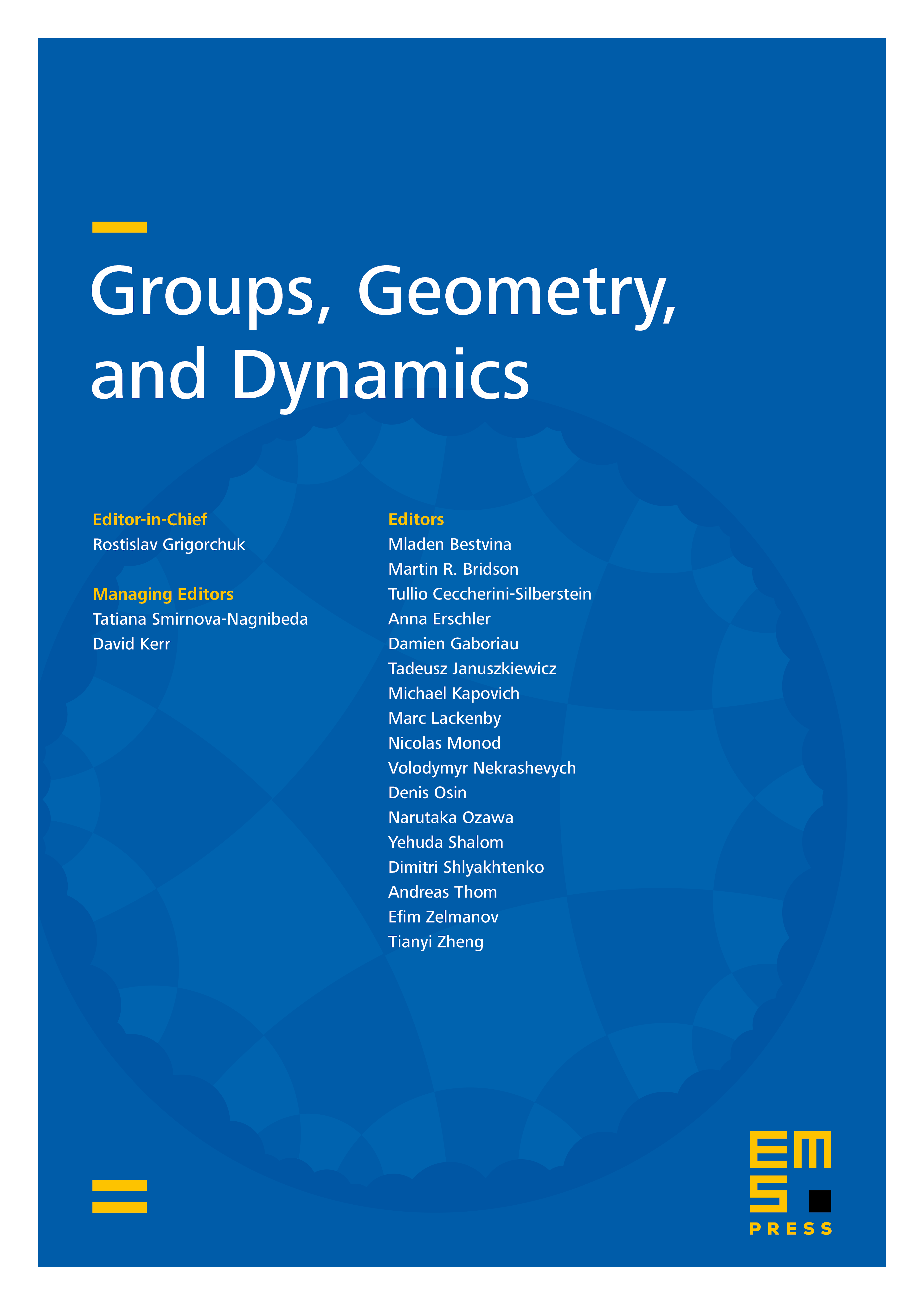Splittings and automorphisms of relatively hyperbolic groups
Vincent Guirardel
Université de Rennes 1, Rennes, FranceGilbert Levitt
Université de Caen Basse-Normandie, Caen, France

Abstract
We study automorphisms of a relatively hyperbolic group . When is one-ended, we describe Out using a preferred JSJ tree over subgroups that are virtually cyclic or parabolic. In particular, when is toral relatively hyperbolic, Out is virtually built out of mapping class groups and subgroups of fixing certain basis elements. When more general parabolic groups are allowed, these subgroups of have to be replaced by McCool groups: automorphisms of parabolic groups acting trivially (i.e. by conjugation) on certain subgroups.
Given a malnormal quasiconvex subgroup of a hyperbolic group , we view as hyperbolic relative to and we apply the previous analysis to describe the group Out of automorphisms of that extend to : it is virtually a McCool group. If Out is infinite, then is a vertex group in a splitting of . If is torsion-free, then Out is of type VF, in particular finitely presented.
We also determine when Out is infinite, for relatively hyperbolic. The interesting case is when is infinitely-ended and has torsion. When is hyperbolic, we show that Out is infinite if and only if splits over a maximal virtually cyclic subgroup with infinite center. In general we show that infiniteness of Out comes from the existence of a splitting with infinitely many twists, or having a vertex group that is maximal parabolic with infinitely many automorphisms acting trivially on incident edge groups.
Cite this article
Vincent Guirardel, Gilbert Levitt, Splittings and automorphisms of relatively hyperbolic groups. Groups Geom. Dyn. 9 (2015), no. 2, pp. 599–663
DOI 10.4171/GGD/322